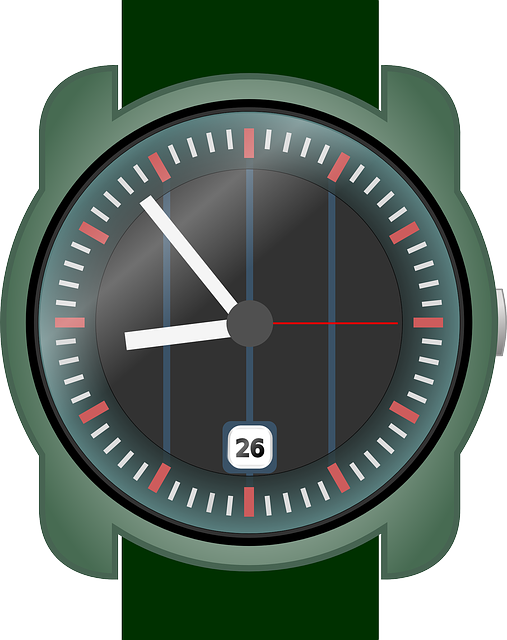بطارية ليثيوم-أيون
| Battery specifications | |
|---|---|
|
بطارية ليثيوم-أيوم لهاتف نوكيا المحمول.
| |
| الطاقة/الوزن | 100-250 W·h/كگ (0.36-0.90 MJ/kg) |
| الطاقة/المقاس | 250-620 واط.س/ليتر (0.90-2.23 MJ/L) |
| القدرة/الوزن | ~250-~340 W/kg |
| الشحن/discharge efficiency | 80-90% |
| الطاقة/ثمن المستهلك | 2.5 W·h/US$ |
| Self-discharge rate | 8% عند 21 °س 15% عند 40 °س 31% عند 60 °س (شهرياً) |
| Cycle durability | 400-1200 العمر |
| Nominal Cell Voltage | 3.6 / 3.7 V |
بطارية ليثيوم-أيون (ويرمز لهاLi-ion بطاريات) وهى نوع من البطاريات القابلة للشحن وفيها فإن أيون الليثيوم يتحرك بين الآنود والكاثود. خلال إفراغ الشحنة وبالعكس من الكاثود إلى الآنود في وقت الشحن.
بطاريات أيونات الليثيوم تعد شائعة في الالكترونيات الاستهلاكية. وهي واحدة من أكثر الأنواع شعبية في الإليكترونيات المحمولة، مع واجدة من أفضل نسبة الطاقة الى الوزن، ولا يوجد أثر الذاكرة، وبطء فقد الشحنة عندما لاتكون قيد الإستخدام. بالإضافة لاستخدامات الالكترونيات الاستهلاكية، بطاريات ليثيوم-أيون تتزايد شعبيتها لأغراض للدفاع، وفى السيارات، ولإستخدامات الفضاء الجوي نظرا لارتفاع كثافتها للطاقة. غير حتى بعض أنواع سوء الإستخدام قد تسبب تنفجر.
الثلاثة عناصر الأساسية الوظيفيةفى بطاريات أيون الليثيوم هى الآنود، والكاثود، والمتحللة بالكهرباء، لمجموعة متنوعة من المواد التي يمكن استخدامها. تجاريا، أكثر المواد إستخداما للآنود هوالجرافيت. الكاثود عموما فإن واحدة من ثلاث مواد: مثل الأكسيد ذى الطبقات، وهو أكسيد ليثيوم كوبالت ، وهومبنى على بولى أنيون، مثل ليثيوم أيون فوسفات، أوspinel، مثل ليثيوم أكسيد منجنيز، وبالرغم من حتى موادا مثل TiS2 (تيتابيوم داى سالفيد) قد أستخدمت أساسا. تعتمد على الخيارات مواد لصنع الآنود والكاثود والإليكتروليت الجهد والقدرة، والعمر، والأمان لبطارية ليثيوم-أيون يمكن حتى تتغير بشكل دراماتيكى. وحاليا معمارية فريدة قد طبقت لتحسين الأداء لتلك البطاريات.بطارية ليثيوم-أيون لايجب الخلط بينها وبين بطاريات ليثيوم، الفارق الأساسى حتى تكون بطاريات الليثيوم بطاريات أولية تتكون من معدن الليثيوم بينما بطارية ليثيوم-أيون تعبير عن بطاريات ثانوية تتكون من intercalation مادة الآنود.
التاريخ
طرحت بطاريات الليثيوم لأول مرة من قبل م. ستانلي وايتنگهام، في جامعة بيگهامتون، بينما كان يعمل لصالح شركة إكسون في السبعينيات. Whittingham used كبريتيد التيتانيوم الثنائي وفلز الليثيوم كأقطاب كهربائية.
The reversible intercalation in graphite and intercalation into cathodic oxides was also discovered in the 1970s by J. O. Besenhard at TU Munich. Besenhard also proposed the application as high energy density lithium cells. Electrolyte decomposition and solvent co-intercalation into graphite were severe drawbacks for long battery cycle life.
Primary lithium batteries in which the negative electrode is made from metallic lithium pose safety issues. As a result, lithium-ion batteries were developed in which both electrodes are made of a material containing lithium ions.
في جامعة اوكسفورد، إنگلترة، عام 1979، اقترح جون گودنف وك. ميزوشيما بطارية قابلة للشحن بقدرة عالية في حدود أربعة ڤولت باستخدام أكسيد الكوبالت ليثيوم (LiCoO2) كقطب موجب وفلز الليثيوم كقطب سالب. قدم هذا الابتكار مادة القطب الموجب ليصبح من الممكن صناعة بطاريات ليثيوم-أيون. LiCoO2 is a stable positive electrode material which acts as a donor of lithium ions, which means that it can be used with a negative electrode material other than lithium metal. By enabling the use of stable and easy-to-handle negative electrode materials, LiCoO2 opened a whole new range of possibilities for novel rechargeable battery systems.
In 1977, Samar Basu demonstrated electrochemical intercalation of lithium in graphite at the University of Pennsylvania. This led to the development of a workable lithium intercalated graphite electrode at Bell Labs (LiC6) to provide an alternative to the lithium metal electrode battery.
في 1980, رشيد يازمي also demonstrated the reversible electrochemical intercalation of lithium in graphite. The organic electrolytes available at the time would decompose during charging if used with a graphite negative electrode, preventing the early development of a rechargeable battery which employed the lithium/graphite system. Yazami used a solid electrolyte to demonstrate that lithium could be reversibly intercalated in graphite through an electrochemical mechanism. The graphite electrode discovered by Yazami is currently the most commonly used electrode in commercial lithium ion batteries.
في 1983، Dr. Michael Thackeray, Goodenough, and coworkers identified manganese spinel as a cathode material. Spinel showed great promise, given its low-cost, good electronic and lithium ion conductivity, and three-dimensional structure, which gives it good structural stability. Although pure manganese spinel fades with cycling, this can be overcome with chemical modification of the material. Manganese spinel is currently used in commercial cells.
In 1985, Akira Yoshino assembled a prototype cell using carbonaceous material into which lithium ions could be inserted as one electrode, and lithium cobalt oxide (LiCoO2), which is stable in air, as the other. By using materials without metallic lithium, safety was dramatically improved over batteries which used lithium metal. The use of lithium cobalt oxide (LiCoO2) enabled industrial-scale production to be achieved easily.
كان هذا ميلاد لبطارية الليثيوم-أيون الحالية.
في يونيو2012، حصل جون گودنوف، ريتشارد يازامي وأكريا يوسينوعلى وسام إديسون 2012 من أجل تكنولوجيات السلامة والبيئة لتطوير بطارية الليثيوم-أيون.
البطاريات المعاصرة
تطوير بطاريات الليثيوم أيون
تعمل شركات السيارات الكبيرة في العالم على إنتاج السيارات الكهربائية. وعلى هذا السبيل فهي بحاجة إلى تطوير بطاريات الليثيوم أيون بحيث تصلح للاستخدام في تحريك السيارة. وقد اختير هذا النوع من البطاريات حيث أنها تلبطاريات الأخرى بالنسبة إلى كثافة سعتها الكهربائية وانخفاض وزنها نسبيا.
وتتكون بطارية الليثيوم أيون التي ستستعمل في السيارت من مصعد من النحاس ومهبط من الألمونيوم. وتغطي ألواح المصعد والمهبط بطبقة رقيقة 2و0 مليمتر من مخلوط يحتوي على الليثيوم. ثم يغطيها غشاء من السيراميك الخاص يمنع من اشتعال الخلية الكهربائية. وعلى الرغم من حتى ذلك الغشاء السيراميكي لا يزيد سمكه عن شعرة رأس فهويتحمل درجات حرارة حتي 700 درجة مئوية بدون حتى يشتعل.
تبتر الأقطاب في مساحة أوراق الكتابة وترص بجانب بعضها بحيث يفصل بينها الكهرل وهوطبقة تشبه اللباد الرقيق مشبعة بمركب يحتوي على الليثيوم.
تستطيع حالياً السيارة الصغيرة التي تعمل ببطارية كهذه وزنها 120 كيلوجرام حتى تسير مسافة 150 كيلومتر. وإذا استبدلت بطارية الليثيوم أيون ببطارية نيكل-متالهيدريد (nickel-metal hydride (NiMH فلا تستطيع السيارة السير إلا مسافة 50 كيلومتر. لذلك تعلق الآمال على بطارية الليثيوم أيون لتسيير السيارات الكهربائية في الفترة القادمة.
الكيمياء الكهربائية
المشاركون الثلاثة في التفاعلات الإليكتروكيميائية لبطارية من ايون الليثيوم هي الآنود، الكاثود، والإليكتروليت. كلا الآنود والكاثود هي من المواد التي يمكن حتى تنتقل من الليثيوم. عملية الانتنطق من الليثيوم إلى أنود أوالكاثود ويشار إليه إدخال (أوإقحام)، والعملية العكسية، التى فيها يتحرك الليثيوم خارجا من الآنود أوالكاثود يشار إليه كاستخراج (أومعكوس الإقحام). عندما تكون الخلية إفراغ الشحنة، ويتم إستخلاص الليثيوم من الآنود تم يتم إدراجه داخل الكاثود. عندما تكون الخلية الشحن، والعملية العكسية تحدث: الليثيوم يستخرج من الكاثود ويعاد إدراجه داخل الآنود.
القطب السالب(خلال الشحن) (آنود) من خلية ليثيوم-أيون تقليدية تصنع من الكربون، والقطب الموجب (إفراغ الشحنة) (الكاثود) هومعدن أكسيد، والإليكتروليت هوليثيوم ملح في عضوى مذيب. العمل الفعال يمكن إستخلاصه فقط إذا تم سريان الإليكترونات في دائرة خارجية. ومن ثم نصف التفاعلات تكون في البؤرة. المعادلات التالية are written in units of moles, making it possible to use the coefficient . The cathode half reaction (with charging being forwards) is:
The anode half reaction is:
The overall reaction has limits. Overdischarge will supersaturate lithium cobalt oxide, leading to the production of lithium oxide, possibly by the following irreversible reaction:
Overcharge up to 5.2V leads to the synthesis of cobalt(IV) oxide, as evidenced by x-ray diffraction
In a lithium-ion battery the lithium ions are transported to and from the cathode or anode, with the transition metal, Co, in being oxidized from Co3+ to Co4+ during charging, and reduced from Co4+ to Co3+ during discharge.
الكاثود
| مادة الكاثود | متوسط الفولت | قدرة الجاذبية |
|---|---|---|
| LiCoO2 | 3.7 V | 140 mAh/g |
| LiMn2O4 | 4.0 V | 100 mAh/g |
| LiFePO4 | 3.3 V | 150 mAh/g |
| Li2FePO4F | 3.6 V | 115 mAh/g |
الآنود
| مادة الآنود | الجهد المتوسط | قدرة الجاذبية |
|---|---|---|
| Graphite (LiC6) | 0.1-0.2 V | 372 mAh/g |
| Li4Ti5O12 | 1-2 V | 160 mAh/g |
| Si (Li4.4Si) | 0.5-1 V | 4212 mAh/g |
| Ge (Li4.4Ge) | 0.7-1.2 V | 1624 mAh/g |
See uranium trioxide for some details of how the cathode works. While uranium oxides are not used in commercially made batteries, the way in which uranium oxides can reversibly insert cations is the same as the way in which the cathode in many lithium-ion cells work. [بحاجة لمصدر]
الإليكتروليت
The cell voltages above are larger than the potential at which aqueous solutions electrolyze. Therefore, nonaqueous solutions are used.
Liquid electrolytes in Li-ion batteries consist of lithium salts, such as , , or , in an organic solvent, such as ether. A liquid electrolyte conducts Li ions, acting as a carrier between the cathode and the anode when a battery passes an electric current through an external circuit. Typical conductivities of liquid electrolyte at room temperature (20 oC) are in the range ofعشرة mS/cm, increasing by approximately 30-40% at 40 oC and decreasing by a slightly smaller amount at 0 oC.
Unfortunately, organic solvents are easily decomposed on anodes during charging. However, when appropriate organic solvents are used as the electrolyte, the solvent is decomposed and forms a solid layer called the solid electrolyte interphase (SEI) at first charge that is electrically insulating yet sufficiently conductive to lithium ions. The interphase prevents decomposition of the electrolyte after the second charge. For example, ethylene carbonate is decomposed at a relatively high voltage, 0.7 V vs. Li, and forms a dense and stable interface. [بحاجة لمصدر]
تصميم جديد
لسنوات عديدة، أمضى مصممى البطاريات أوقاتا وجهودا للبحث عن الشيء الكبير المقبل في تكنولوجيا تخزين الطاقة والتي يمكن حتى تحل محل بطاريات الليثيوم ايون الموجودة حاليا والمستخدمة في جميع شيء تقريبا من أجهزة الكمبيوتر المحمولة إلى الهواتف الحديثة إلى حتى السيارات. واتضح أنهم ببساطة قد يحدثون بحاجة لإعادة النظر في بطارية ليثيوم أيون الموجودة حاليا.فقام باحثون من جامعة نورث وسترن بإعادة تصميم بطارية الليثيوم ايون التي يمكن حتى تدوم شحنتها أكثر عشر مرات من البطاريات المتوافرة حاليا في الأسواق، ويمكن حتى تتلقى شحنتها أسرع بعشرة أضعاف.
الخدعة: الأنود الذى أعيد تصميمه والذي تتناول القضيتين الرئيسيتين لبطاريات ليثيوم أيون مرة أخرى --وهما سعة الشحنة ومعدل الشحن. بطاريات الليثيوم أيون تعمل عن طريق تفاعل كيميائي يتم فيه تبديل أيونات الليثيوم بين طرفي البطارية المعروفين باسم (الأنود والكاثود). وحيثما تم إستهلاك طاقة البطارية عن طريق الجهاز كالهاتف الذكى مثلا، فإن الأيونات تنطلق من مكان تخزينها في الأنود من خلال إليكتروليت إلى القطب السالب. في خلال عملية الشحن ،فإن الشحنة يتم تمريرها من خلال دورة عكسية، من الكاثود إلى الآنود.
ويستند التصميم الحالي للأنود على صحائف الگرافين --طبقة سمكها ذرة واحدة من الكربون التي يمكنها القيام بتخزين أيونات الليثيوم. ولكن هذه الأنودات تقوم فقط بتخزين ذرة واحدة من الليثيوم لكل ستة ذرات من الكربون ، بدلا من شحن منخفض الكثافة نوعا ما. وقد جرب المصممين موادا مثل السيليكون ، والتي يمكن حتى تجتذب أربعة ذرات من الليثيوم لكل ذرة من السيليكون، ولكن السيليكون يميل إلى التمدد والإتساع بشكل ملحوظ خلال عملية الشحن، الامر الذي يؤدى الى تفتته. وهذا بطبيعة الحال يقلل من عمر الأنود.
التصميم المستند إلى الگرافين يؤدى إلى تباطؤ معدل الشحن أيضا. نظرا لهندسة صحائف الگرافين -- الرقيقة جدا لكنها طويلة بما فيه الكفاية -- أيونات الليثيوم تقوم برحلة طويلة على حواف أوراق الگرافين ثم تقوم بدفعها إلى الداخل. هذا يسبب نوعا من عنق الزجاجة حول حواف الأنود ويبطئ من معدل الشحن بشكل ملحوظ.
فريق جامعة نورث ويسترن قفز من فوق هذه المشاكل بشكل ملحوظ من خلال إعادة النظر في الأنود ودمجه بتصميم هجين الگرافين-السيليكون الذي يؤيد القدرات ومعدل الشحن في نفس الوقت. أولا، إنهم وضعوا طبقات من السيليكون بين صحائف الگرافين، والسماح لأعداد أكبر من ايونات الليثيوم لتستقر هناك. السيليكون يتمدد ويتسع أثناء الشحن والتفريغ، ولكن مرونة الگرافين تكمن في أنه لا يزال يحمل الأنود معه. يمكن لجزىء السيليكون حتى يتفتت لكنه لا يزال باقيا في مكانه، حيث يسمح للأنود بإجراء مزيدا من الشحن.
الفريق قد إستخدم الأكسدة الكيميائية لإحداث ثقوب صغيرة في صحائف الگرافين -- فقط بقطر 10-20 نانومتر -- حتى أيونات الليثيوم يمكنها التحرك من خلال الجرافين بدلا من الاضطرار للذهاب إلى جميع أنحاء حواف الأنود (حيث تحدث الاختناقات المرورية). هذا الاختصار يسمح لأيونات الليثيوم حتى تتكوم في الأنود سريعا في خلال عملية الشحن، معطيا معدلات شحن أكثر منعشرة أضعاف السرعة المعتادة.
وهذا مجرد الأنود، الباحثين يعدوت الخطة المقبلة لإعادة التفكير في القطب السالب لمواصلة تعزيز الكفاءة والفعالية. ويمكن تحسين بطارية ليثيوم أيون لتغزوالأسواق في السنوات الثلاث الى الخمس القادمة.
المزايا والعيوب
المزايا
- Wide variety of shapes and sizes efficiently fitting the devices they power.
- Much lighter than other energy-equivalent secondary batteries.
- High open circuit voltage in comparison to aqueous batteries (such as lead acid, nickel-metal hydride and nickel-cadmium). This is beneficial because it increases the amount of power that can be transferred at a lower current.
- No memory effect.
- Self-discharge rate of approximately 5-10% per month, compared to over 30% per month in common nickel metal hydride batteries, approximately 1.25% per month for Low Self-Discharge NiMH batteries and 10% per month in nickel-cadmium batteries. According to one manufacturer, lithium-ion cells (and, accordingly, "dumb" lithium-ion batteries) do not have any self-discharge in the usual meaning of this word. What looks like a self-discharge in these batteries is a permanent loss of capacity (see Disadvantages). On the other hand, "smart" lithium-ion batteries do self-discharge, due to the drain of the built-in voltage monitoring circuit.
- Components are environmentally safe as there is no free lithium metal.[]
العيوب
عمر البطارية
- Charging forms deposits inside the electrolyte that inhibit ion transport. Over time, the cell's capacity diminishes. The increase in internal resistance reduces the cell's ability to deliver current. This problem is more pronounced in high-current applications. The decrease means that older batteries do not charge as much as new ones (charging time required decreases proportionally).
- High charge levels and elevated temperatures (whether from charging or ambient air) hasten capacity loss. Charging heat is caused by the carbon anode (typically replaced with lithium titanate which drastically reduces damage from charging, including expansion and other factors).
- A Standard (Cobalt) Li-ion cell that is full most of the time at 25 °م (77 °ف) irreversibly loses approximately 20% capacity per year. Poor ventilation may increase temperatures, further shortening battery life. Loss rates vary by temperature: 6% loss at 0 °م (32 °ف), 20% at 25 °م (77 °ف), and 35% at 40 °م (104 °ف). When stored at 40%–60% charge level, the capacity loss is reduced to 2%, 4%, and 15%, respectively.[] In contrast, the calendar life of cells is not affected by being kept at a high state of charge.
المقاومة الداخلية
- The internal resistance of standard (Cobalt) lithium-ion batteries is high compared to both other rechargeable chemistries such as nickel-metal hydride and nickel-cadmium, and LiFePO4 and lithium-polymer cells.Internal resistance increases with both cycling and age. Rising internal resistance causes the voltage at the terminals to drop under load, which reduces the maximum current draw. Eventually increasing resistance means that the battery can no longer operate for an adequate period.
- To power larger devices, such as electric cars, connecting many small batteries in a parallel circuit is more effective and efficient than connecting a single large battery.
متطلبات الأمان
If overheated or overcharged, Li-ion batteries may suffer thermal runaway and cell rupture. In extreme cases this can lead to combustion. Deep discharge may short-circuit the cell, in which case recharging would be unsafe. To reduce these risks, Lithium-ion battery packs contain fail-safe circuitry that shuts down the battery when its voltage is outside the safe range of 3–4.2 V per cell. When stored for long periods the small current draw of the protection circuitry itself may drain the battery below its shut down voltage; normal chargers are then ineffective. Many types of lithium-ion cell cannot be charged safely below 0°C.
Other safety features are required in each cell:
- shut-down separator (for overtemperature)
- tear-away tab (for internal pressure)
- vent (pressure relief)
- thermal interrupt (overcurrent/overcharging)
These devices occupy useful space inside the cells, add additional points of failure and irreversibly disable the cell when activated. They are required because the anode produces heat during use, while the cathode may produce oxygen. These devices and improved electrode designs reduce/eliminate the risk of fire or explosion.
These safety features increase costs compared to nickel metal hydride batteries, which require only a hydrogen/oxygen recombination device (preventing damage due to mild overcharging) and a back-up pressure valve.
التصميم والمواصفات
- Specific energy density: 150 to 200 Wh/kg (540 to 720 kJ/kg)
- Volumetric energy density: 250 to 530 Wh/l (900 to 1900 J/cm³)
- Specific power density: 300 to 1500 W/kg (@ 20 seconds and 285 Wh/l)
Because lithium-ion batteries can have a variety of cathode and anode materials, the energy density and voltage vary from chemistry to chemistry.
Lithium ion batteries with a lithium iron phosphate cathode and graphite anode have a nominal open-circuit voltage of 3.2 V and a typical charging voltage of 3.6 V. Lithium nickel manganese cobalt (NMC) oxide cathode with graphite anodes have a 3.7 V nominal voltage with a 4.2 V max charge. The charging procedure is done at constant voltage with current limiting circuitry. This means charging with constant current until a voltage of 4.2 V is reached by the cell and continuing with a constant voltage applied until the current drops close to zero. Typically the charge is terminated at 7% of the initial charge current. In the past, lithium-ion batteries could not be fast-charged and typically needed at least two hours to fully charge. Current generation cells can be fully charged in 45 minutes or less; some Lithium-Ion variants can reach 90% in as little asعشرة minutes.
إدخال تحسينات على بطارية ليثيوم أيون
نظرة عامة
Improvements focus on several areas, and often involve advances in nanotechnology and microstructures:
- Increasing cycle life and performance (decreases internal resistance and increases output power) by changing the composition of the material used in the anode and cathode along with increasing the effective surface area of the electrodes.(related developments have helped ultracapacitors )
- Improving capacity by improving the structure to incorporate more active materials.
- Improving the safety of Lithium Ion style batteries.
Manganese Spinel Cathodes
LG, which is the third largest producer of lithium ion batteries, uses the lithium manganese spinel for its cathode. It is working with its subsidiary CPI to commercialize lithium ion batteries containing manganese spinel for HEV applications. Several other companies are also working on manganese spinel, including NEC and Samsung.
Lithium Iron Phosphate Cathode With Traditional Anode
The University of Texas first licensed its patent for lithium iron phosphate cathodes to the canadian utility Hydro-Québec.Phostech was later spun-off from Hydro-Québec for the sole development of lithium iron phosphate.
Valence Technology, located in Austin, Texas, is also working on lithium iron phosphate cells. Since March 2005, the Segway Personal Transporter has been shipping with extended-range lithium-ion batteries made by Valence Technology using iron phosphate cathode materials. Segway, Inc. chose to build their large-format battery with this cathode material because of its improved safety over metal-oxide materials.
In November 2005, A123Systems announced the development of lithium iron phosphate cells based on research licensed from MIT. While the battery has slightly lower energy density than other competing Lithium Ion technologies, a 2 Ahr cell can provide a peak of 70 Amps without damage and operate at temperatures above 60 degrees C. Their first cell is in production (1Q/2006) and being used in consumer products including DeWalt power tools, aviation products, automotive hybrid systems and PHEV conversions.
LiFePO4 cells are currently available commercially.
High Power Cathode using Lithium Nickel Manganese Cobalt (NMC)
Imara Corporation, based out of Menlo Park, CA is commercializing a new materials-agnostic technology first applied on an NMC material which has the effect of lowering impedance and extending cycle life. These high power capable cells have high energy density relative to other high power cells in the market. The batteries are being deployed in power tools, outdoor power equipment and hybrid vehicles.
Traditional Cathode With Lithium Titanate Anode
Altairnano, a small firm based in Reno, Nevada, has announced a nano-sized titanate electrode material for lithium-ion batteries. It is claimed the prototype battery has three times the power output of existing batteries and can be fully charged in six minutes. However the energy capacity is about half that of normal li-ion cells. The company also says the battery cells have now achieved a life of over 9,000 charge cycles and they still retain up to 85% charge capacity, so durability and battery life are much longer, estimated to be around 20 years or four times longer than regular lithium-ion batteries. The batteries can operate from -50 °C to over 75 °C and will not explode or result in thermal runaway even under severe conditions because they do not contain graphite-coated-metal anode electrode material. The batteries are currently being tested in a new production car made by Phoenix Motorcars which was on display at the 2006 SEMA motorshow. They're also being tested, on a one megawatt grid scale, in the PJM Interconnection Regional Transmission Organization control area in Norristown, PA as well as by several branches of the U.S. Department of Defense. In addition the batteries are being demonstrated by Proterra in their all-electric EcoRide BE35 vehicle, a lightweight 35-foot bus. Altairnano is currently working with three different cell chemistries, for various energy and power storage applications, with another new cell chemistry expected in the fall of 2009. The nature of their latest cathode materials is currently proprietary.
Combined anode and cathode developments
EnerDel, which is jointly owned by Ener1 and Delphi, is working to commercialize cells containing a titanate anode and manganese spinel cathode. Although the cells show excellent thermal properties and cyclability, their low voltage may hamper commercial success.
مزاعم بحثية
In April 2006, a group of scientists at MIT announced a process which uses viruses to form nano-sized wires. These can be used to build ultrathin lithium-ion batteries with three times the normal energy density.
As of June 2006, researchers in France have created nanostructured battery electrodes with several times the energy capacity, by weight and volume, of conventional electrodes.
In the September 2007 issue of Nature, researchers from the University of Waterloo, Canada, reported a new cathode chemistry, whereby the hydroxide group in the iron phosphate cathode was replaced by fluorine. [4] The advantages seem to be two-fold. First, there is less volume change in the cathode over a charge cycle which indicates a possibility for longer battery life. Second, the chemistry allows the substitution of Sodium or a Sodium/Lithium mixture for the Lithium in the battery (hence their reference to it as an Alkali-Ion battery).
In November 2007, Subaru unveiled their concept G4e electric vehicle with a lithium vanadium oxide based lithium ion battery, promising double the energy density of a conventional lithium ion battery (lithium cobalt oxide and graphite).[5] In the lab, Lithium vanadium oxide anodes, paired with lithium cobalt oxide cathodes, have achieved 745Wh/l, nearly three times the volumetric energy density of conventional lithium ion batteries. [6]
In December 2007, researchers at Stanford University reported creating a lithium ion nanowire battery with ten times the energy density (amount of energy available by weight) through using silicon nanowires deposited on stainless steel as the anode. The battery takes advantage of the fact that silicon can hold large amounts of lithium, and helps alleviate the longstanding problem of cracking by the small size of the wires. [7] To gain a tenfold improvement in energy density, the cathode would need to be improved as well; however, just improving the anode as such could provide "several" times the energy density, according to the team. The team leader, Yi Cui, expects to be able to commercialize the technology in about five years.[8]. Having a large capacitive anode won't increase the capacity of the battery as predicted by the author when the cathode material is far less capacitive than the anode. However current Li-ion capacity is mainly limited by the low theoretical capacity (372 mAh g−1) of graphite as the anode material so improvement would be significant and limited by cathode material instead of anode.
There are trials in progress to use metal hydrides as anode material for Li-ion batteries. Practical capacity of electrode as high as 1480 mAh g-1 is reported.[9]
In April 2009 a report in New Scientist claimed that Angela Belcher's team at MIT had succeeded in producing the first full virus-based 3-volt Lithium ion battery.
البطاريات الدقيقة
في أبريل 2013، قام فريقي بحثي من جامعة إلينوي بتطوير نوع حديث من البطاريات، يمكن اعتبارها ثورة في عالم البطاريات. قام الباحثون باستخدام أقطاب كهربائية ثلاثية الأبعاد تسمح بصنع بطاريات دقيقة ذات حجم أقل بكثير وطاقة أكبر بكثير عن البطاريات التجارية المتوافرة. يمكن إعادة شحن البطاريات الجديدة 1.000 ضعف سرعة إعادة الشحن الحالية، إلا أنه لا يزال هناك مشكلات متعلقة بالأمان.
يعتقد الباحثون حتى البطاريات الدقيقة الجديدة ستكون مناسبة للهواتف الذكية والأجهزة الإلكترونية الأخرى التي تحتوي على مساحة محدودة للبطاريات. تعمل البطاريات بمكونين - قطبين - يمكن الحصول عليهم بتفاعلات كيميائية.
Guidelines for prolonging Li-ion battery life
- Like many rechargeable batteries, lithium-ion batteries should be charged early and often. However, if they are not used for a long time, they should be brought to a charge level of around 40%–60%
- Lithium-ion batteries should not be frequently fully discharged and recharged ("deep-cycled"), but this may be necessary after about every 30th recharge to recalibrate any electronic charge monitor (e.g. a battery meter). This allows the monitoring electronics to more accurately estimate battery charge. This has nothing to do with the memory effect.
- Li-ion batteries should never be depleted to below their minimum voltage, 2.4 V to 3.0 V per cell.
- Li-ion batteries should be kept cool. Ideally they are stored in a refrigerator. Aging will take its toll much faster at high temperatures. The high temperatures found in cars cause lithium-ion batteries to degrade rapidly.
- Li-ion batteries should not be frozen (most lithium-ion battery electrolytes freeze at approximately −40 °C; however, this is much colder than the lowest temperature reached by household freezers).
- Li-ion batteries should be bought only when needed, because the aging process begins as soon as the battery is manufactured.
- When using a notebook computer running from fixed line power over extended periods, consider removing the battery and storing it in a cool place so that it is not affected by the heat produced by the computer.
الشحن ودرجة حرارة التخزين
Storing a Li-ion battery at the correct temperature and charge makes all the difference in maintaining its storage capacity. The following table shows the amount of permanent capacity loss that will occur after storage at a given charge level and temperature.
| درجة حرارة التخزين | 40% الشحن | 100% الشحن |
|---|---|---|
| 0 °س (32 °ف) | 2% تفقد بعد سنة واحدة | 6% تفقد بعد سنة واحدة |
| 25 °س (77 °ف) | 4% تفقد بعد سنة واحدة | 20% تفقد بعد سنة واحدة |
| 40 °C (104 °F) | 15% تفقد بعد سنة واحدة | 35% تفقد بعد سنة واحدة |
| 60 °C (140 °F) | 25% تفقد بعد سنة واحدة | 80% تفقد بعد 6 أشهر |
| المصدر: BatteryUniversity.com | ||
It is significantly beneficial to avoid storing a lithium-ion battery at full charge. A Li-ion battery stored at 40% charge will last many times longer than one stored at 100% charge, particularly at higher temperatures.
If a Li-ion battery is stored with too low a charge, there is a risk of allowing the charge to drop below the battery's low-voltage threshold, resulting in an unrecoverable dead battery. Once the charge has dropped to this level, recharging it can be dangerous. Some batteries therefore feature an internal safety circuit which will prevent charging in this state, and the battery will be for all practical purposes dead. [بحاجة لمصدر]
In circumstances where a second Li-ion battery is available for a given device, it is recommended that the unused battery be discharged to 40% and placed in the refrigerator to prolong its shelf life. While the battery can be used or charged immediately, some Li-ion batteries will provide more energy when brought to room temperature.
Prolonging Life in Multiple Cells Through Cell Balancing
Analog front ends that balance cells and eliminate mismatches of cells in series or parallel significantly improve battery efficiency and increase the overall pack capacity. As the number of cells and load currents increase, the potential for mismatch also increases. There are two kinds of mismatch in the pack: State-of-Charge (SOC) and capacity/energy (C/E) mismatch. Though the SOC mismatch is more common, each problem limits the pack capacity (mAh) to the capacity of the weakest cell.
It is important to recognize that the cell mismatch results more from limitations in process control and inspection than from variations inherent in the Lithium Ion chemistry. The use of cell balancing can improve the performance of series connected Li-ion Cells by addressing both SOC and C/E issues. SOC mismatch can be remedied by balancing the cell during an initial conditioning period and subsequently only during the charge phase. C/E mismatch remedies are more difficult to implement and harder to measure and require balancing during both charge and discharge periods.
- Cell Balancing
Cell balancing is defined as the application of differential currents to individual cells (or combinations of cells) in a series string. Normally, of course, cells in a series string receive identical currents. A battery pack requires additional components and circuitry to achieve cell balancing. However, the use of a fully integrated analog front end for cell balancing reduces the required external components to just balancing resistors.
This type of solution eliminates the need for discrete capacitors, diodes and most other resistors to achieve balance.
Battery pack cells are balanced when all the cells in the battery pack meet two conditions:
- If all cells have the same capacity, then they are balanced when they have the same State of Charge (SOC.) In this case, the Open Circuit Voltage (OCV) is a good measure of the SOC. If, in an out of balance pack, all cells can be differentially charged to full capacity (balanced), then they will subsequently cycle normally without any additional adjustments. This is mostly a one shot fix.
- If the cells have different capacities, they are also considered balanced when the SOC is the same. But, since SOC is a relative measure, the absolute amount of capacity for each cell is different. To keep the cells with different capacities at the same SOC, cell balancing must provide differential amounts of current to cells in the series string during both charge and discharge on every cycle.
الأمان
Lithium-ion batteries can rupture, ignite, or explode when exposed to high temperature environments e.g. in an area that is prone to prolonged direct sunlight. Short-circuiting a Li-ion battery can cause it to ignite or explode and any attempt to open or modify the casing or circuitry is dangerous. For this reason they normally contain safety devices that protect the cells from abuse.
Contaminants inside the cells can defeat these safety devices. For example, the mid-2006 recall of approximatelyعشرة million Sony batteries used in Dell, Sony, Apple, Lenovo/IBM, Panasonic, Toshiba, Hitachi, Fujitsu and Sharp laptops was stated to be as a consequence of internal contamination with metal particles. Under some circumstances, these can pierce the separator, causing the cell to short, rapidly converting all of the energy in the cell to heat resulting in an exothermic oxidizing reaction, increasing the temperature to a few hundred degrees Celsius in a fraction of a second. This causes the neighboring cells to heat up, causing a chain thermal reaction.
The mid-2006 Sony laptop battery recall was not the first of its kind, however it was the largest to date. During the past decade there have been numerous recalls of lithium-ion batteries in cellular phones and laptops owing to overheating problems. In October 2004, Kyocera Wireless recalled approximately 1 million batteries used in cellular phones, due to counterfeit batteries produced in Kyocera's name. In December 2006, Dell recalled approximately 22,000 batteries from the U.S. market. In March 2007, Lenovo recalled approximately 205,000 9-cell lithium-ion batteries due to an explosion risk. In August 2007, Nokia recalled over 46 million lithium-ion batteries, warning that some of them might overheat and possibly explode. There was an incident in الفلپين involving a Nokia N91, which uses the BL-5C battery.
Replacing the lithium cobalt oxide cathode material in li-ion batteries with lithiated metal phosphate leads to longer cycle, and shelf life, improves safety, but lowers capacity. Currently these 'safer' li-ion batteries are mainly used in electric cars and other large-capacity battery applications, where the safety issues are more critical.
Another option is to use manganese oxide or iron phosphate cathode.
A new class of high power cathode materials, lithium nickel manganese cobalt (NMC) oxide has recently been introduced that have 40% higher energy density than iron phosphate, ثلاثة times the cycle life of manganese oxide and exceptional high power performance. These cells have a significantly higher temperature tolerance compared to lithium cobalt oxide.
القيود المفروضة على وسائل النقل
As of January 2008, the US Department of Transportation issued a new rule that permits passengers on board commercial aircraft to carry lithium batteries in their checked baggage, only if they are installed in a device. The purpose of this restriction is that it greatly reduces the chances of them becoming short-circuited and causing a fire. The only types of batteries affected by this rule are those containing lithium, including Li-ion, Lithium Polymer, and Lithium Cobalt Oxide chemistries. A limited number of replacement batteries can be carried in hand luggage providing they are kept in their original protective packaging or in individual containers or plastic bags.
الاستخدامات
Across the globe, major automakers including General Motors, BYD Auto, Ford, Hyundai, Toyota, and Tata Motors have been racing to be first to sell electric vehicles powered by lithium-ion batteries. A US company Tesla Motors is already delivering their lithium-ion-powered BEV Tesla Roadster. In the aftermarket, models such as the Prius have been fitted with lithium-ion batteries.
انظر أيضاً
- Battery balancer
- حامل البطارية
- إعادة تدوير البطارية
- بطارية ليثيوم
- بطارية فوسفاات-حديد-ليثيوم
- Nanowire battery
- Power-to-weight ratio
- بطارية أكسيد الفضة
- Superpolymer
- بطارية پوليمر الليثوم
المصادر
- ^ "Rechargeable Li-Ion OEM Battery Products". Panasonic.com. Retrieved 2010-04-23.
- ^ "Panasonic Develops New Higher-Capacity 18650 Li-Ion Cells; Application of Silicon-based Alloy in Anode". greencarcongress.com. Retrieved 2011-01-31.
- ^ Valøen & Shoesmith (2007). The effect of PHEV and HEV duty cycles on battery and battery pack performance (PDF). 2007 Plug-in Highway Electric Vehicle Conference: Proceedings. Retrieved 2010-06-11.
- ^ 11.10V,6600Mah, Li-Ion, Replacement Laptop Battery For Dell (etc). Amazon.com Online Store. Retrieved 2010-06-11.
- ^ H. Abea, T. Muraia and K. Zaghibb (1999). Vapor-grown carbon fiber anode for cylindrical lithium ion rechargeable batteries. Journal of Power Sources 77:2, February 1999, pp. 110-115. DOI:10.1016/S0378-7753(98)00158-X. Retrieved 2010-06-11.
- ^ Battery Types and Characteristics for HEV ThermoAnalytics, Inc., 2007. Retrieved 2010-06-11.
- ^ MRS Website : Theme منطقة - علوم وتطبيقات من الموصلات المختلطة لبطاريات الليثيوم
- ^ Whittingham, M. S. (1976). "Electrical Energy Storage and Intercalation Chemistry". Science. 192 (4244): 1126–7. Bibcode:1976Sci...192.1126W. doi:10.1126/science.192.4244.1126. PMID 17748676.
- ^ J.O.Besenhard and H.P. Fritz, Cathodic Reduction of Graphite in Organic Solutions of Alkali and NR 4+ Salts, J. Electroanal. Chem., 53, 329 (1974)
- ^ J.O. Besenhard, The Electrochemical Preparation and Properties of Ionic Alkali Metal and NR 4+ Graphite Intercalation Compounds in Organic Electrolytes, Carbon, 14, 111 (1976)
- ^ R. Schallhorn, R. Kuhlmann, and J.O. Besenhard, Topotactic Redox Reactions and Ion Exchange of Layered MoO3 Bronzes,, Mat. Res. Bull., 11, 83 (1976)
- ^ J.O. Besenhard and R. Schallhorn, The Discharge Reaction Mechanism of the MoO3 Electrode in Organic Electrolytes" J. Power Sources, 1, 267 (1976/77)
- ^ J.O. Besenhard and G. Eichinger, High Energy Density Lithium Cells. Part I. Electrolytes and Anodes, J. Electroanal. Chem., 68, 1 (1976); and G. Eichinger
- ^ J.O. Besenhard, High Energy Density Lithium Cells. Part II. Cathodes and Complete Cells, J. Electroanal. Chem., 72, 1 (1976)
- ^ ". Patft.uspto.gov. Retrieved 8 October 2011.
- ^ M. Zanini, S. Basu, J.E. Fischer Carbon, "Alternate Synthesis & Reflectivity Spectrum of Stage 1 Lithium-Graphite Intercalation Compound", vol. 16, 1978 (Elsevier), pp. 211–212
- ^ S. Basu, C. Zeller, P.J. Flanders, C.D. Fuerst, W.D. Johnson, J.E. Fischer Materials Science & Eng. "Synthesis & Prop. of Lithium-Graphite Intercalated Compounds," vol. 38, 1979 (Elsevier), pp. 275–283
- ^ نطقب:Ref patent
- ^ International Meeting on Lithium Batteries, Rome, 27–29 April 1982, C.L.U.P. Ed. Milan, Abstract #23
- ^ Journal of Power Sources (April–May 1983),تسعة (3–4), 365–371
- ^ M.M. Thackeray, W.I.F. David, P.G. Bruce, and J.B. Goodenough (4 February 1983). "Lithium insertion into manganese spinels". Materials Research Bulletin. Elsevier. 18 (4): 461–472. doi:10.1016/0025-5408(83)90138-1.CS1 maint: multiple names: authors list (link)
- ^ Gholamabbas Nazri, Gianfranco Pistoia (2004). . Springer. ISBN . Retrieved 8 October 2009.
- ^ Voelcker, John (September 2007). Lithium Batteries Take to the Road IEEE Spectrum.
- ^ نطقب:Ref patent
- ^ Silberberg, M. 2006. الكيمياء: الطبيعة الجزيئية للمادة والتغيير ، 4th Ed. New York (NY): McGraw-Hill Education. p 935.
- ^ . "Gold Peak Industries Ltd., Lithium Ion technical handbook" (pdf).
- ^ H.C. Choi et al., J. Phys. Chem. B 107 p5806(2003) doi:10.1021/jp030438w
- ^ G.G. Amatucci, J.M. Tarascon, L.C. Kein J. Electrochemical Society 143 p1114 1996 doi:10.1149/1.1836594
- ^ http://www.cheric.org/PDF/Symposium/S-J2-0063.pdf
- ^ Balbuena, P.B., Wang, Y.X., eds. Lithium Ion Batteries: Solid Electrolyte Interphase 2004 Imperial College Press, London
- ^ New Li-ion Battery Design Boosts Energy Capacity and Charge Rate 10-Fold
- ^ Winter & Brodd 2004, pp. 4256, 4258
- ^ , Winter & Brodd 2004, p. 4254
- ^ Winter & Brodd 2004, p. 4259
- ^ Aging - capacity loss BatteryUniversity.com.[]
- ^ Winter & Brodd 2004, p. 4258
- ^ Altair Nano: Power & Energy Systems[]
- ^ . Battery University: Fig. 1 Non-recoverable capacity loss[]
- ^ Battery Management Systems for Large Lithium-Ion Battery Packs page 9
- ^ "A123 M1 cell specifications" (PDF).
- ^ Battery Management Systems for Large Lithium-Ion Battery Packs page 12
-
^ Buchmann, Isidor (200804). "Choosing a battery that will last". Isidor Buchmann (CEO of Cadex Electronics Inc.). Check date values in:
|date=(help) [] - ^ Battery Management Systems for Large Lithium-Ion Battery Packs page 229
- ^ Buchmann, Isidor (2006). "BatteryUniversity.com: How to prolong lithium-based batteries". Cadex Electronics Inc. Unknown parameter
|month=ignored (help) [] - ^ Spotnitz, R.; Franklin, J. (2003). "Abuse behavior of high-power, lithium-ion cells". Journal of Power Sources. Elsevier. 113: 81–100. doi:10.1016/S0378-7753(02)00488-3.
- ^ Buchmann, Isidor (February 2003). "Advanced battery analyzers". Isidor Buchmann. Retrieved 2009-12-26. []
- ^ "Lithium-ion Battery Charging Basics". PowerStream Technologies. Retrieved 4 December 2010.
- ^ http://www.e-one.com.tw/News_2005_e.htm
- ^ AeroVironment Achieves Electric Vehicle Fast Charge Milestone Test Rapidly Recharges a Battery Pack Designed for Use in Passenger Vehicles.عشرة Minute Re-Charge Restores Enough Energy to Run Electric Vehicle for Two Hours at 60 Miles Per Hour
- ^ http://www.aei-online.org/automag/techbriefs/10-2006/1-114-10-16.pdf
- ^ IEEE Spectrum: Lithium Batteries Take to the Road
- ^ Bickel & Brewer - A law firm devoted exclusively to the resolution of complex commercial disputes. Bickel & Brewer was formed with a singular goal: to serve clients in significant, disputed matters that involve substantial dollar or business exposures...: Detail
- ^ http://www.segway.com/personal-transporter/lithium_ion.html
- ^ http://www.a123systems.com/html/news/articles/051102_news.html
- ^ Green Car Congress: A123Systems Launches New Higher-Power, Faster Recharging Li-Ion Battery Systems
- ^ Yahoo! Groups
- ^ [http://www.imaracorp.com
- ^ Microsoft PowerPoint - 061125 Altair EDTA Presentation
- ^ [1]
- ^ [2]
- ^ [3]
- ^ Welcome to Ener1
- ^ Microsoft PowerPoint - EnerDel Technical Presentation.ppt [Read-Only]
- ^ Science Express (preprint) http://www.sciencemag.org/cgi/content/abstract/1122716
- ^ Technology Review: Higher-Capacity Lithium-Ion Batteries
- ^ Zandonella, Catherine (11 April 2009). "Battery grown from "armour plated" viruses". New Scientist. Tribune media Services International. 202 (2703): 1.
- ^ "Super-powered battery breakthrough claimed by US team". بي بي سي. 2013-04-18. Retrieved 2013-04-18.
- ^ L.M. Cristo, T. B. Atwater. Characteristics and Behavior of 1M LiPF6 1EC:1DMC Electrolyte at Low Temperatures. Fort Monmouth, NJ: U.S. Army Research.
- ^ How to prolong lithium-based batteries
- ^ AN1333
- ^ ISL9208 Multi-Cell Li-ion Battery Pack OCP/Analog Front End
- ^ http://www.tayloredge.com/museum/mymuseum/sciencefun/li-ion_003.mov
- ^ Dell laptop explodes at Japanese conference - The INQUIRER
-
^ "Kyocera Launches Precautionary Battery Recall, Pursues Supplier of Counterfeit Batteries" (Press release). Kyocera Wireless. 2004-10-28. Check date values in:
|date=(help) - ^ Tullo, Alex. "Dell Recalls Lithium Batteries." Chemical and Engineering News 21 August 2006: 11.
- ^ http://en.wikinews.org/wiki/Nokia_issues_BL-5C_battery_warning%2C_offers_replacement
- ^ Nokia N91 cell phone explodes
- ^ Safety Last - New York Times
- ^ Technology Review: New Batteries Readied for GM's Electric Vehicle
- ^ http://www.imaracorp.com
- ^ http://www.atbatt.com/blog/31.asp
- ^ Galbraith, R. "U.S. Department of Transportation revises Lithium battery rules press release". Retrieved 2009-05-11.
- ^ http://www.cleantech.com/news/3694/electrovaya-tata-motors-make-electric-indica
- ^ http://www.teslamotors.com
- ^ http://www.calcars.org/priusplus.html
وصلات خارجية
- Electropaedia on rechargeable Lithium batteries.
- Charging the Lithium Ion Battery.
- How Lithium-ion Batteries Work.
- Stanford's nanowire battery holdsعشرة times the charge of existing ones, Stanford Report, December 18, 2007
- The Lithium Ion Battery.
- Advantages and Limitations of the Lithium Polymer Battery, Jan 2007.






















